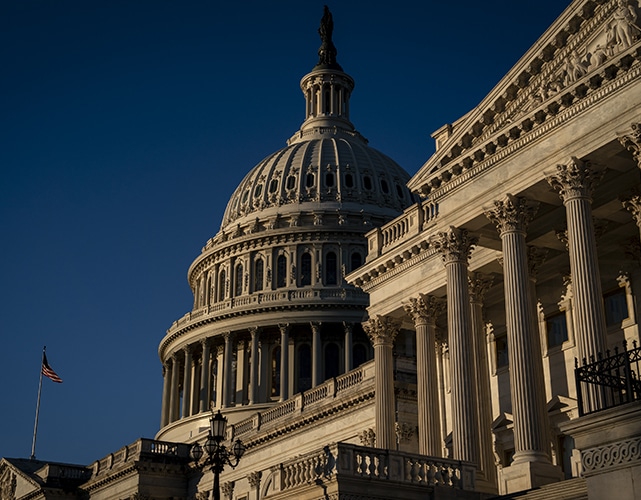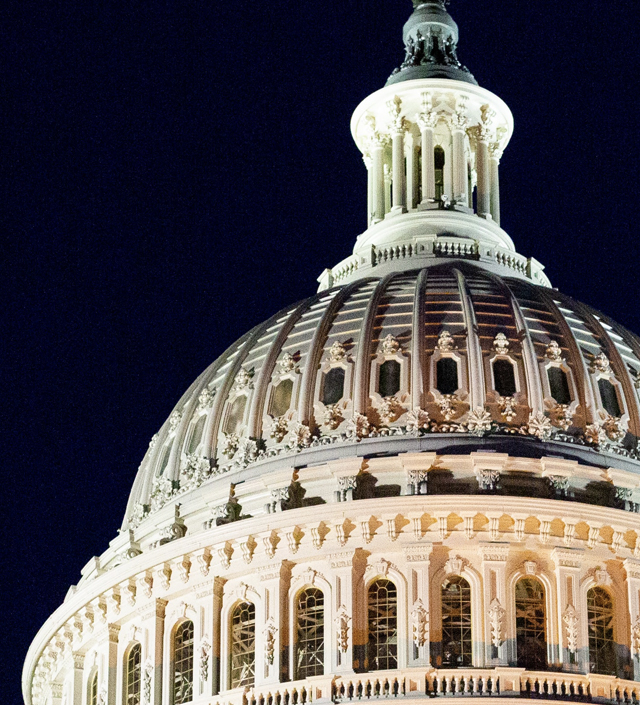The United States is on a pace to add nearly $19 trillion to its national debt over the next decade as the mounting costs of an aging population and higher interest expenses continue to weigh on the nation’s fiscal outlook, the nonpartisan Congressional Budget Office said Feb. 7.
But the report did offer a sliver of relief: Recently enacted legislation to curb federal spending and a U.S. economy that has been growing faster than expected are making the fiscal picture slightly less bleak. Annual deficits over the next decade are 7% smaller than the $20.3 trillion the budget office forecast last year.
That decline reflects several conflicting forces. A deal that President Joe Biden and congressional Republicans struck last year to limit discretionary spending for two years reduces deficits over the decade. So does a surge of 5.2 million new workers into the labor force, most of them immigrants.
But those deficit declines are partly offset by an increase in the estimated budget costs from Biden’s clean-energy agenda, an aging U.S. population and higher interest rates on the national debt.
In a statement released with the report, the budget office’s director, Phillip L. Swagel, said that even with the decline in deficits, the nation remained on track to rack up more debt as a share of its total economic output in 2034 than at any other time in its history.
Deficit Keeps Growing
The projections for the nation’s finances come as Congress faces another deadline next month to agree on federal spending legislation to keep the government running. Lawmakers are also engaged in a heated debate over providing more aid to Ukraine and Israel and whether to expand the child tax credit and restore expired business tax breaks.
The budget office projected that the annual deficit will grow to $2.6 trillion in 2034 from $1.6 trillion this year, adding $18.9 trillion to the national debt during the decade. By then, the debt is projected to surpass $54 trillion.
Interest Costs, Safety Net Programs
Interest rates have surged to two-decade highs over the past year, making borrowing costs an increasingly significant contributor to the national debt.
From 2024 to 2034, the United States will spend more than $12 trillion alone on interest costs. Starting next year, net interest costs will be larger as a share of the U.S. economy than at any time since the federal government started keeping records in 1940, according to the budget office.
Spending on safety net programs such as Social Security and Medicare continues to grow even as their trust funds face the prospect of being depleted in the next 10 years.
Aging Population
“Also boosting deficits are two underlying trends: the aging of the population and growth in federal health care costs per beneficiary,” Swagel said in a statement that accompanied the report. “Those trends put upward pressure on mandatory spending.”
Tax Cuts
The national debt is likely to be even larger than the budget office is predicting, as its forecast assumes that the 2017 tax cuts that Republicans enacted will fully expire even though lawmakers are already considering extending many of the measures, including lower individual income tax brackets.
Clean Energy Costs
For the second time in less than a year, the budget office said it now expected Biden’s efforts to wean the nation from fossil fuels to be more popular with the public — and more expensive for taxpayers — than initially estimated.
Biden’s 2022 Inflation Reduction Act included the largest incentives in American history to speed up the development and deployment of energy technologies. Among those incentives were tax breaks for companies investing in factories to produce wind turbines, solar panels and other clean-energy technologies, along with a credit of up to $7,500 for people who buy certain electric vehicles.
The budget office initially projected those breaks, and other climate provisions, would add $391 billion to deficits from 2022 to 2031. It now estimates the actual cost will be at least twice as large when measured over that same time window.
The change is partly because the office now estimates much stronger demand for the energy manufacturing credits than it initially anticipated. It is also partly a result of another of Biden’s policies: a proposed Environmental Protection Agency regulation that is meant to ensure two-thirds of new passenger cars sold in America will be all electric by 2032. The office expects that regulation to supercharge demand for electric vehicles and reduce the amount of gasoline that American drivers consume — which will, in turn, reduce federal revenues from gasoline taxes.
The Biden administration, which will produce its next budget proposal next month, has defended its efforts as fiscally — and environmentally — responsible.
Treasury Secretary Janet Yellen told lawmakers Feb. 6 that interest costs remained manageable as a share of the overall U.S. economy and noted that Biden had proposed $2.5 trillion in deficit reduction, much of which would come from tax increases and a more rigorous approach to tax collection.
“We need to be on a fiscally sustainable path, and it’s critical to reduce deficits in order to ensure that that’s the case,” Yellen said, lamenting that lawmakers have not acted on the administration’s deficit reduction plans.
U.S. gross national debt topped $34 trillion last month, and fiscal watchdog groups have been pressing lawmakers to form a fiscal commission that would develop policies to stabilize the debt.
“Today’s CBO projections are the latest loud and clear warning about America’s unsustainable national debt,” Michael A. Peterson, CEO of the Peter G. Peterson Foundation, which promotes deficit reduction, said in a statement. “There has never been a more urgent time for a bipartisan fiscal commission to recommend solutions to put us on a stronger path.”
c.2024 The New York Times Company. This article originally appeared in The New York Times.







